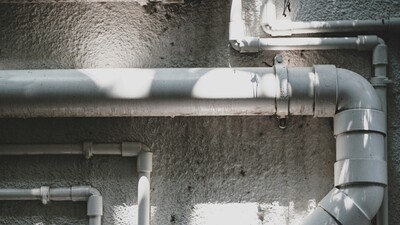Durgo valves, also known as Air Admittance Valves (AAVs), play a crucial role in maintaining the balance of pressure within soil or waste pipes. These valves help to normalise pressure levels, ensuring your plumbing system functions efficiently.
If you understand the importance of Durgo valves and their proper installation, you can maintain a balanced and odour-free plumbing system in your home. Read this blog post to find out more about them.
Why Do We Need Durgo Valves?
The Problem with Negative Pressure
Whenever a toilet is flushed, both water and air travel through the waste pipe. This movement creates negative pressure as the system attempts to replace the displaced air.
Consequences of Imbalance
If the system cannot draw in air properly, it seeks air from other sources, like plugholes, which can lead to several issues:
- Gurgling sounds in your drains
- Unpleasant odours emanating from the plumbing
- Wastewater bubbling up into sinks or toilets
How Does a Durgo Valve Work?
Durgo valves activate when wastewater is sent into the waste pipe, causing negative pressure. The valve opens to allow air in, equalising the pressure. Once balance is achieved, the valve closes, preventing odours from escaping into your home.
Open Pipe Outlets vs. Durgo Valves
Open Pipe Outlets
Traditionally, an open pipe outlet on the roof allows external air to balance the pressure. However, this method has limitations:
- It requires placement at least 3 metres away from any window
- It may not be feasible for certain roof types or comply with building regulations
The Durgo Valve Advantage
In scenarios where an open pipe outlet is impractical, Durgo valves offer a reliable alternative. They are installed using a push-fit joint and should be placed no lower than the highest exit point of any toilets, baths, or sinks. Often, they are installed in the loft space or, in extreme cases, outside the house.
Troubleshooting Common Durgo Valve Issues
Persistent Smells and Potential Causes
If you notice persistent smells even after installing a Durgo valve, it could be due to:
- A stuck valve needing lubrication
- Incorrectly installed valve placed too low
- Insufficient number of valves in the system
- Blocked wastewater pipes
Ensuring Easy Access
For effective troubleshooting, your Durgo valve should be installed in an accessible location, allowing for easy inspection and maintenance.
We hope you have found this information interesting and helpful. If you have any further questions you are always welcome to call our friendly team of experts on 01420 555600 or email [email protected].
Also, look out for more articles in our ongoing series of blog posts, bringing you useful information, insights, guides and tips on all things drainage!

Written by
Bob Stone
Technical Sales
Heading up our Technical Estimating Department, Bob is our in-house quantity surveyor.

